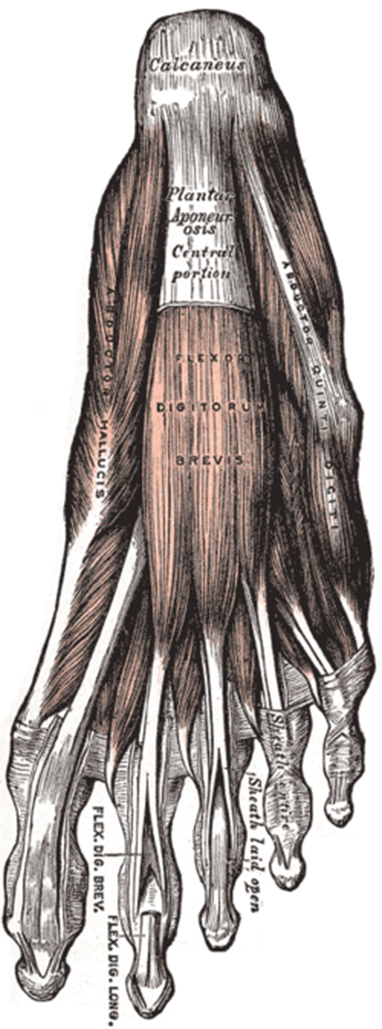
Affiliated Foot Care Center
Call 860•349•8500 or 203•294•4977

Plantar fasciitis (also known as plantar fasciopathy or jogger's heel) is a common painful disorder affecting the heel and underside of the foot. It is a disorder of the insertion site of ligament on the bone and is characterized by scarring, inflammation, or structural breakdown of the foot's plantar fascia. It is often caused by overuse injury of the plantar fascia, increases in exercise, weight, or age. Though plantar fasciitis was originally thought to be an inflammatory process, newer studies have demonstrated structural changes more consistent with a degenerative process.
Approximately 10% of people have plantar fasciitis at some point during their lifetime. It is commonly associated with long periods of standing and is much more prevalent in individuals with excessive inward rolling of the foot, which is seen with flat feet. Among non-athletic populations, plantar fasciitis is associated with obesity and lack of physical exercise.
The most common cause of heel pain is plantar fasciitis (pronounced PLAN-tar fashee-EYE-tiss). If you have plantar fasciitis you may have a heel spur on the front and bottom of your heel, but heel spurs do not cause pain. The common name is "heel spur" because it's easier to pronounce than "plantar fasciitis" and doctors are able to point to the spur on an x-ray. Causes of heel pain include inadequate flexibility in the calf muscles, lack of arch support, being overweight, suddenly increasing activity, and spending too much time on your feet.
Plantar Fasciitis is an inflammation of the plantar fascia. "Plantar" means the bottom of the foot, "fascia" is a type of connective tissue, and "itis" means "inflammation". Heel spurs are soft, bendable deposits of calcium that are the result of tension and inflammation in the plantar fascia attachment to your heel. When you walk, at the moment the heel of your trailing leg begins to lift off the ground, the plantar fascia endures tension that is approximately two times your body weight. This moment of maximum tension increases suddenly if there is lack of flexibility in your calf muscles. An increase in your body weight causes the same percentage increase in tension in the fascia. Due to the repetitive nature of walking, plantar fasciitis may be a repetitive stress disorder (RSD) similar to tennis elbow. If your condition is mild, we generally recommend rest, stretching and ice.
People with this problem tend to notice it first thing in the morning. The pain is usually in the front and bottom of the heel, but the definition of "plantar fasciitis" indicates it can be over any portion of the bottom of the foot where the fascia is located and many people report that the pain "moves around." If your pain is in your heel, walking on the balls and toes of your feet will tend to make the pain worse.
This condition can become chronic and not respond well to treatment. Dr. Fosdick can help you feel better thorugh the use of topical creams, prescribed orthotics, EPAT Treatment and a revolutionary technique that harvests your platlets, which the Doctor then will reintroduce into the affected area in your foot. Dr. Fosdick has found that this condition benefits considerably from laser therapy as well. Let Dr. Fosdick stop the pain in your feet!